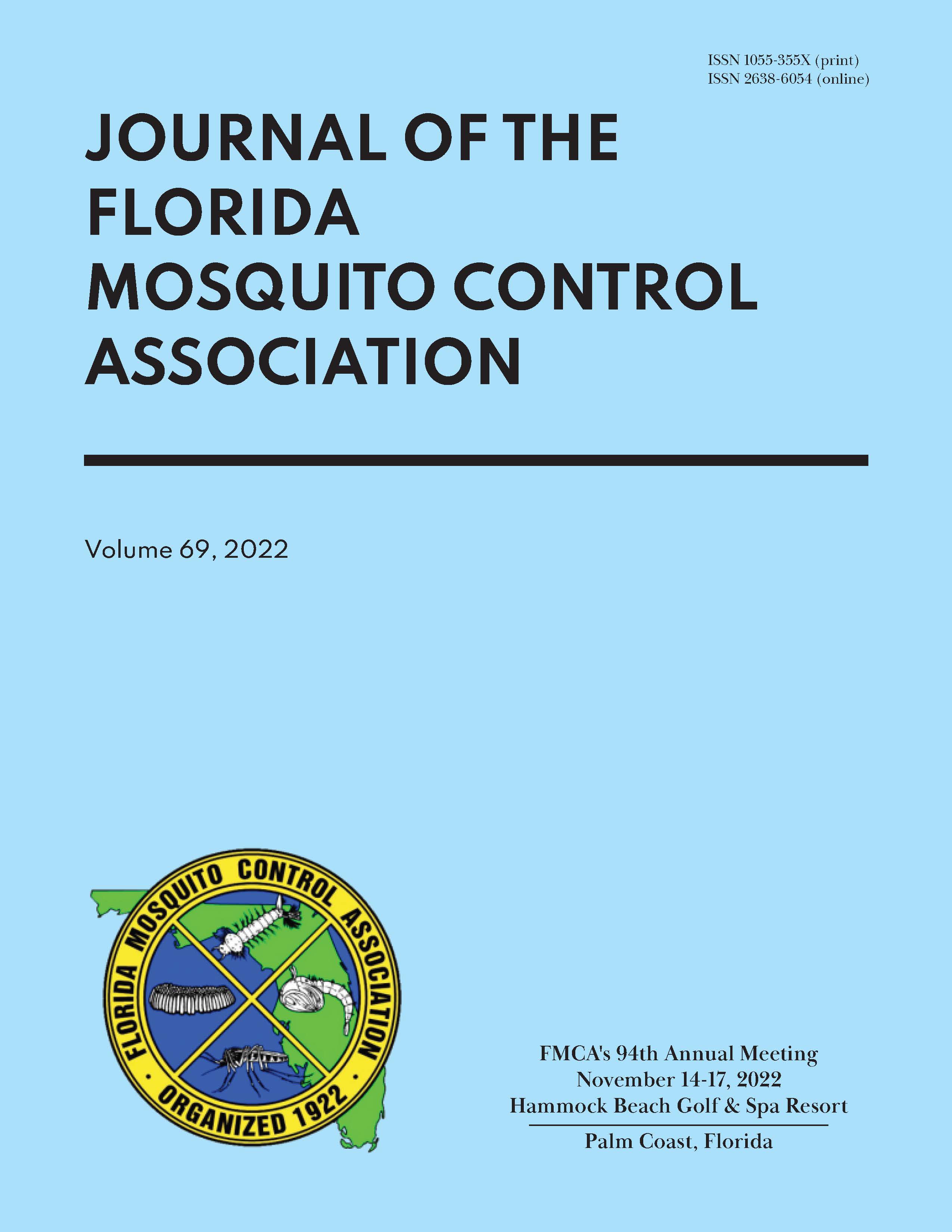FIELD EVALUATION OF AUTOCIDAL GRAVID OVITRAPS AND IN2CARE TRAPS AGAINST AEDES MOSQUITOES IN SAINT AUGUSTINE, NORTHEASTERN FLORIDA
DOI:
https://doi.org/10.32473/jfmca.v69i1.130626Keywords:
Aedes aegypti, Aedes albopictus, Autocidal Gravid Ovitrap, In2Care trap, Gravid mosquitoesAbstract
Mosquito control programs are utilizing cost-effective long-term autocidal traps targeting the gravid population of container-inhabiting and other mosquito species, with the aim of reducing vector populations and disease transmission risk. In this field study we directly compared the efficacy of the Autocidal Gravid Ovitrap (AGO) and In2Care mosquito traps in St. Augustine, Florida. Total numbers of eggs (Aedes aegypti and Ae. albopictus) and adult mosquitoes were calculated at different weeks of trap deployment, pre-treatment (wk1-2), during-treatment (wk3-6), and post-treatment (wk7-8). There was a 72% reduction in both Aedes eggs in the two sites tested post-trap deployment, compared to pre-trap deployment. The mean numbers of eggs collected in the post-treatment, compared to pre-treatment showed that the In2Care traps had a higher reduction of mosquito oviposition (80%) than the AGO traps (23%). A total of 19 mosquito species included non container-inhabiting mosquitoes, Aedes taeniorhynchus, Culex quinquefasciatus, and Cx. nigripalpus, were collected by BG traps baited with BG lure and dry ice from the test sites. The species abundance varied between the two sites and collection weeks. The container-inhabiting mosquitoes, Aedes aegypti and Ae. albopictus were the major species. There was a significantly higher reduction in mosquito Aedes aegypti populations in the AGO (mean ± SE) (1.3 ± 1.7) and In2Care (4.9 ± 4.6) sites (X2= 20.13, P < 0.0001) post trap deployment, compared to pre-trap deployment. By week 8, the recovery rate of mosquito populations was highest in the In2Care trap site, followed by the AGO site. This result suggests that AGO traps were more effective than In2Care traps in reducing Ae. aegypti mosquito populations. For Ae. albopictus, the In2Care site had 100% reduction, and this was higher than the AGO site.


